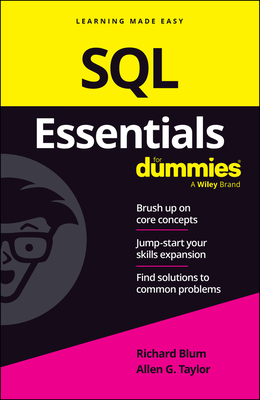ASP.NET Core MVC - VS2019/Core 5.0 Training in Sandy
|
We offer private customized training for groups of 3 or more attendees.
|
||
Course Description |
||
| This course provides a practical hands-on introduction to developing Web applications using ASP.NET Core 5.0 MVC and C#. This Web development framework from Microsoft emphasizes separation of concerns in the architecture and testability of applications. This course covers development on Microsoft’s new .NET Core platform. The course is current to .NET 5.0, which is a major update of .NET Core and is the foundation for future Microsoft .NET development. This course covers the fundamentals of the Model-View-Controller design pattern and its implementation in ASP.NET Core MVC. This technology is compared with classical ASP.NET Web Forms. Visual Studio 2019 is used as a productive platform for creating MVC Web applications. After presenting the fundamentals of the technology with several examples, the main components of Model, Controller and View are covered in detail. The discussion of the Model incorporates Microsoft technologies for persisting data, including XML Serialization and ADO.NET with SQL Server 2016. The routing mechanism of ASP.NET MVC is covered. The course includes an introduction to ASP.NET Web API and deployment on the Azure cloud. Numerous programming examples and exercises are provided. The student will receive a comprehensive set of notes and all the programming examples.
Course Length: 2 Days
Course Tuition: $890 (US) |
||
Prerequisites |
|
| The student should have a good working knowledge of C# and the .NET Framework. Basic knowledge of HTML and some prior exposure to .NET Core would also be helpful. | |
Course Outline |
|
1. Introduction to ASP.NET MVC
Review of ASP.NET Web Forms
Advantages and Disadvantages of Web Forms
Model-View-Controller Pattern
ASP.NET MVC
ASP.NET Core
What is ASP.NET Core?
Advantages and Disadvantages of ASP.NET MVC
ASP.NET Core 5.0
Unit Testing
2. Getting Started with ASP.NET Core MVC
An ASP.NET Core MVC Testbed
Installing ASP.NET MVC
Using Visual Studio
Action Methods and Routing
Action Metho Return Type
Rendering a View
Creating a View
The View Web Page
Razor View Engine
Dynamic Output
Embedded Scripts
Embedded Script Example
Using a Model with ViewBag
Controller Using Model and ViewBag
View Using Model and ViewBag
Using Model Directly
Passing Parameters in Queue String
3. NET MVC Architecture
The Controller in ASP.NET MVC
The View in ASP.NET MVC
The Model in ASP.NET MVC
How MVC Works
Using Forms
Helper Methods for HTML
Form Submission
Model Binding
Input Validation
Nullable Type
Checking Model Validity
4. The Model
Complex Models
MVC Books Example
Microsoft Technologies for the Model
XML Serialization
Deserialization
ADO.NET
LINQ
ADO.NET Entity Framework 6
CRUD Operations
NuGet Package Manager
5. The Controller
IController Interface
Controller Base Class
Actions
Retrieving Data from a Request
Nullable Parameters
Action Results
Action Attributes
Filters
Asynchronous Controllers
6. The View
View Responsibility
View Page
Using Dynamic and Expando Objects
Html Helpers
Validation Attributes
Validation Helpers
7. Routing
Routing in ASP.NET Core MVC
Properties of Routes
Parameters in Routing
Attribute Routing
Registering Routes
Debugging Routes
Areas
8. ASP.NET Core Web API
ASP.NET Core Web API
REST
Representation, State and Transfer
Collections and Elements
String Controller
Project Settings
HTTP Testing Tools
Using Postman
HTTP Response Codes
POST/GET Response Code
Named Route
Response Code for PUT and DELETE
Web API Client
HttpClient
9. ASP.NET Core and Azure
What is Windows Azure?
A Windows Azure Testbed
Windows Azure Demo
Publish to Azure
Web Deployment Completed
Modifying a Web Application
Deploy to Original Site
A Deployed Application
Appendix A. Learning Resources
|
Course Directory [training on all levels]
- .NET Classes
- Agile/Scrum Classes
- AI Classes
- Ajax Classes
- Android and iPhone Programming Classes
- Azure Classes
- Blaze Advisor Classes
- C Programming Classes
- C# Programming Classes
- C++ Programming Classes
- Cisco Classes
- Cloud Classes
- CompTIA Classes
- Crystal Reports Classes
- Data Classes
- Design Patterns Classes
- DevOps Classes
- Foundations of Web Design & Web Authoring Classes
- Git, Jira, Wicket, Gradle, Tableau Classes
- IBM Classes
- Java Programming Classes
- JBoss Administration Classes
- JUnit, TDD, CPTC, Web Penetration Classes
- Linux Unix Classes
- Machine Learning Classes
- Microsoft Classes
- Microsoft Development Classes
- Microsoft SQL Server Classes
- Microsoft Team Foundation Server Classes
- Microsoft Windows Server Classes
- Oracle, MySQL, Cassandra, Hadoop Database Classes
- Perl Programming Classes
- Python Programming Classes
- Ruby Programming Classes
- SAS Classes
- Security Classes
- SharePoint Classes
- SOA Classes
- Tcl, Awk, Bash, Shell Classes
- UML Classes
- VMWare Classes
- Web Development Classes
- Web Services Classes
- Weblogic Administration Classes
- XML Classes
- Introduction to Spring 6, Spring Boot 3, and Spring REST
15 December, 2025 - 19 December, 2025 - See our complete public course listing
C# Programming Uses & Stats
|
Difficulty
|
Popularity
|
Year Created 2000 |
|
Pros
In Demand:
C# along with Java is one of the top languages in demand for employers.
.Net Library:
C# is integrated with the .Net Library thereby providing access to a vast archive of functionality and support.
Team Friendly:
Multiple developers can easily work together on a project.
Compiled Language:
The code that is stored on a public-facing server is in binary form. In other words, if your server gets hacked, the hacker doesn't automatically have access to your source code.
Transferable:
C# roots are derived from C which means that the structure is transferable to other languages like Java, Objective C, PHP and C++.
|
Cons
Steep Learning Curve:
Windows Application Exclusively:
Any .NET application needs a Windows platform to execute which means that companies using Linux servers would need Windows hosting to run a .Net application.
Lack of Support for Older .NET:
Many enterprise organizations keep older operating systems because of the many problems that an upgrade can bring to the platform. Microsoft stops supporting older .NET frameworks after a few operating systems upgrades.
|
| C# Programming Job Market |

Average Salary
|

Job Count
|

Top Job Locations
New York City |
|
Complimentary Skills to have along with C# Programming
Since the .NET development ecosystem spans a wide array of capabilities and tools, it is difficult for .NET developers to know which .NET development skills and training to pursue in order to increase their marketability — and earning potential. For that reason, learning supplemental languages such as Java, JavaScript, Python, C/C++, and others is expected in today’s competitive skill-set driven playing field. |






